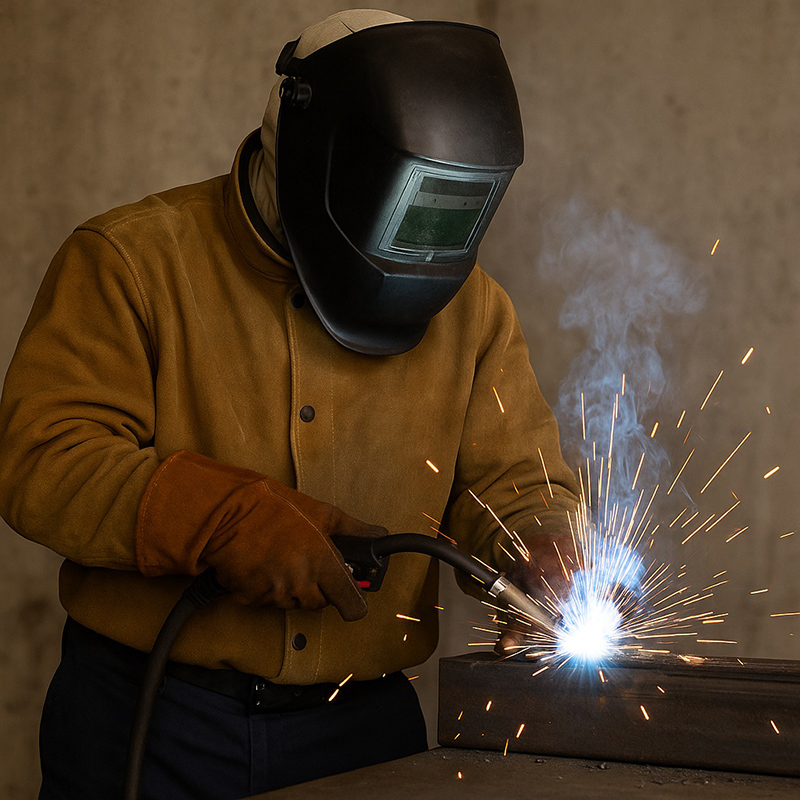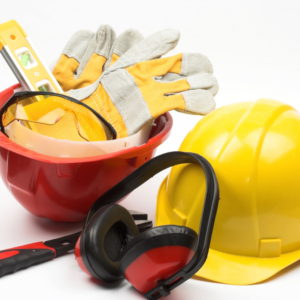Introduction: Small Oversights, Big Consequences
In welding, everyone knows the basics — wear a helmet, gloves, and flame-resistant clothing. But despite this awareness, injuries still happen. Why? Because many welders unknowingly skip or misuse critical PPE components that seem “minor” but play a major role in safety.
At Gonow Safety, we believe safety lies in the details. This article dives into the most commonly overlooked PPE elements during welding operations — and how to avoid the same mistakes.
1. Neck and Ear Protection: The Forgotten Zones
Most welders wear a helmet — but leave the neck and ears exposed. Sparks and spatter can easily sneak through collars or under the edge of a helmet, causing painful burns.
✅ Solution:
Use flame-resistant balaclavas or leather welding hoods under your helmet. Ensure collars are closed and overlapping with jackets.
2. Wrong Type of Gloves for the Task
Not all welding gloves are equal. MIG welding, TIG welding, and stick welding each generate different heat levels and require different glove flexibility.
✅ Solution:
Choose gloves based on welding type:
-
TIG: Thin, dexterous gloves (goat leather or deerskin)
-
MIG/Stick: Heavier, heat-resistant gloves (split cowhide or pigskin)
Make sure cuffs cover your wrists completely — no skin should be exposed when arms are extended.
3. Improper Footwear: Sparks Travel Down
Foot burns are surprisingly common, especially when welders wear sneakers or non-leather shoes. Molten metal drops can land on laces or burn through synthetic materials.
✅ Solution:
Wear leather, steel-toe safety boots with metatarsal protection and heat-resistant soles. Avoid fabric shoelaces — use leather or tuck laces inside the boot.
4. Welding Jackets That Leave Gaps
A welding jacket that rides up or doesn’t fasten completely can expose skin to UV rays and sparks — leading to “welders’ sunburn” or flash burns.
✅ Solution:
Invest in a full-coverage FR (flame-resistant) welding jacket with snap closures or velcro flaps. For overhead welding, choose a leather cape with bib for extra coverage.
5. Helmet Lens: Wrong Shade or Poor Condition
Using the wrong lens shade or a scratched/damaged lens can lead to eye strain, arc flash, or long-term vision damage.
✅ Solution:
-
Use auto-darkening helmets with variable shade (DIN 9–13)
-
Inspect lens regularly; replace scratched or cloudy lenses
-
Always wear safety glasses underneath — your helmet won’t protect against grinding debris or lens failure.
6. Inadequate Respiratory Protection
Welding fumes contain toxic particles and gases like hexavalent chromium and ozone. Yet many welders skip respiratory protection, especially in “short” jobs.
✅ Solution:
Use appropriate respiratory protection depending on material:
-
Disposable P100 masks for basic metal fume protection
-
Half-face respirators with replaceable cartridges
-
PAPR systems (powered air-purifying respirators) for heavy-duty jobs
Final Reminder: Don’t Let Familiarity Breed Complacency
Welding is dangerous — even if you’ve done it for decades. Often, it’s not the big equipment that fails, but the small overlooked details that lead to injury.
At Gonow Safety, we supply PPE solutions tailored for welding professionals. We also help our clients avoid common mistakes by offering consultation and custom PPE packages for every welding environment.
Call to Action:
Ready to upgrade your welding safety game?
Explore our Welding PPE Collection or contact us for a tailored safety solution today.


